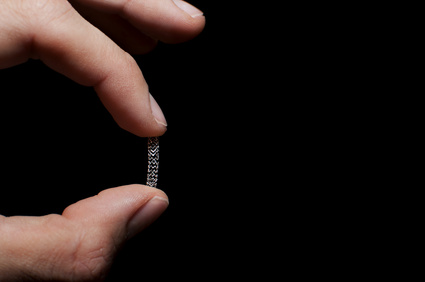When we carry out an angioplasty guided by angiography alone, as we historically have, we are almost blind. Nowadays, optical coherence tomography (OCT) offers plenty of detail but also raises costs, procedure time, and contrast volume. The question that this study aimed to answer is whether becoming aware of all small defects and imperfections in stent implantation, which are invisible to conventional angiography, is actually worth it. That is to say, the question was whether the impact of OCT-defined suboptimal stent implantation at long-term follow-up could be assessed.
 Such was the context for the Centro per la Lotta contro l’Infarto – Optimisation of Percutaneous Coronary Intervention (CLI-OPCI) registry, which compared the long-term outcome of angioplasty in 1211 patients from 13 independent OCT-experienced sites according to end-procedural OCT findings.
Such was the context for the Centro per la Lotta contro l’Infarto – Optimisation of Percutaneous Coronary Intervention (CLI-OPCI) registry, which compared the long-term outcome of angioplasty in 1211 patients from 13 independent OCT-experienced sites according to end-procedural OCT findings.
OCT assessment revealed suboptimal stent implantation in 30.9% (!) of lesions, which entails an increase in patients experiencing device-related events (52.8% vs. 28.0%, p <0,001).
Read also: OCT Follow-Up of Plaque Erosion with Medical Therapy and Without Stenting.
At a mean follow-up of 833 days, minimum lumen area <4.5 mm² (hazard ratio [HR]: 1.82; p < 0.001), distal stent edge dissection >200 µm (HR: 2.03; p = 0.004), and reference vessel plaque and lumen area <4.5 mm² at both the distal (HR: 5.22; p < 0.001) or proximal (HR: 5.67; p < 0.001) stent edges were independent predictors of stent failure.
Against all odds, other factors such as MLA/reference lumen area <70%, strut malapposition, and plaque protrusion or in-stent thrombus did not predict events.
Conclusion
Suboptimal stent implantation, defined according to specific OCT-defined criteria, predicts long-term events. However, other factors that were presumed predictors due to logical thinking and apparently supporting evidence were discarded as such. The quintessential example of this is probably acute stent malapposition.
Original title: Long-Term Consequences of Optical Coherence Tomography Findings During Percutaneous Coronary Intervention: The Centro Per La Lotta Contro L’infarto – Optimization Of Percutaneous Coronary Intervention (CLI-OPCI) LATE Study.
Reference: Francesco Prati et al. EuroIntervention 2018;14:e443-e451.
Get the latest scientific articles on interventional cardiologySubscribe to our weekly newsletter
We are interested in your opinion. Please, leave your comments, thoughts, questions, etc., below. They will be most welcome.





